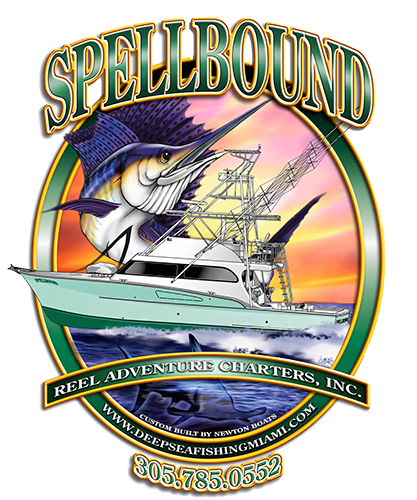amberjack Fishing in Miami
WHERE WE FIND THEM
Amberjack start there life on the surface under floating sea weeds like Sargasso weed. When the mature they will swim down to the bottom. They search out the reefs were the food is. As they grow Amberjack will move out to deeper water. When in the deeper water they get attracted to sunken ship wrecks. The ship wrecks offer the Jacks just what they are looking for. Large cover to hide in and a large source for on going food. The ship wrecks off Miami and Miami beach offer shelter to all kinds of bait fish (sardines, herring, silversides, scads etc…) shellfish (crabs, shrimp, lobster, etc…) and small fish like snappers, triggers, blue runners, and little tunny.
Amberjack will school up on the Deep Wreck off Miami and Miami Beach every fall and will stay there until late spring. These great fish will spawn in the spring. That is when we find the largest schools and most aggressive feeding behaviors. Our best fishing season for Amberjacks start in November and run until about May.
THE FISHING RIGS WE USE
Greater Golden Amberjacks are aggressive feeders that are triggered by movement. Although they will on occasion eat a dead bait, they much prefer live baits. The more active the live bait the better. Bait fish like Pinfish and Blue Runners work well. Although a live Bonita, Bullet, flip or Little Tunny are the best baits.
These baits will get hit quickly if Amberjacks are around. When the giant Jacks are feeding we have caught them on just about any live bait. We have had success with grunts, small jacks, snappers, Torro, Sand Tiles, sand perch and just about any small reef fish. If you are looking to target the largest of the Amberjacks, use a large bait. We have caught big Amberjacks on baits as big as 5 pounds.
The rig that we have found to be the most productive is a long leader attached to a three way swivel on one end and a large circle hook on the other. Although the leader we use will range from 50 pound to 125 pound. We choose our leaders to match the size of the tackle (line weight and rod and reel choice), the size and type of bait and the size of the fish we are targeting. We also will take into account the type and size of the structure we are fishing around.
The hook size is chosen to match the bait. We will hang a lead of 1 pound to about 4 pounds depending on the wind and current, from the third connector on the swivel. I like to use 3 pounds of lead almost always. That gives me the ability to slow troll the bait either around the wreck or hold position when the currents are strong.
